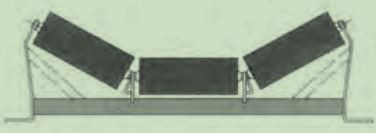 Afrikaans
Afrikaans  Albanian
Albanian  Amharic
Amharic  Arabic
Arabic  Armenian
Armenian  Azerbaijani
Azerbaijani  Basque
Basque  Belarusian
Belarusian  Bengali
Bengali  Bosnian
Bosnian  Bulgarian
Bulgarian  Catalan
Catalan  Cebuano
Cebuano  Corsican
Corsican  Croatian
Croatian  Czech
Czech  Danish
Danish  Dutch
Dutch  English
English  Esperanto
Esperanto  Estonian
Estonian  Finnish
Finnish  French
French  Frisian
Frisian  Galician
Galician  Georgian
Georgian  German
German  Greek
Greek  Gujarati
Gujarati  Haitian Creole
Haitian Creole  hausa
hausa  hawaiian
hawaiian  Hebrew
Hebrew  Hindi
Hindi  Miao
Miao  Hungarian
Hungarian  Icelandic
Icelandic  igbo
igbo  Indonesian
Indonesian  irish
irish  Italian
Italian  Japanese
Japanese  Javanese
Javanese  Kannada
Kannada  kazakh
kazakh  Khmer
Khmer  Rwandese
Rwandese  Korean
Korean  Kurdish
Kurdish  Kyrgyz
Kyrgyz  Lao
Lao  Latin
Latin  Latvian
Latvian  Lithuanian
Lithuanian  Luxembourgish
Luxembourgish  Macedonian
Macedonian  Malgashi
Malgashi  Malay
Malay  Malayalam
Malayalam  Maltese
Maltese  Maori
Maori  Marathi
Marathi  Mongolian
Mongolian  Myanmar
Myanmar  Nepali
Nepali  Norwegian
Norwegian  Norwegian
Norwegian  Occitan
Occitan  Pashto
Pashto  Persian
Persian  Polish
Polish  Portuguese
Portuguese  Punjabi
Punjabi  Romanian
Romanian  Russian
Russian  Samoan
Samoan  Scottish Gaelic
Scottish Gaelic  Serbian
Serbian  Sesotho
Sesotho  Shona
Shona  Sindhi
Sindhi  Sinhala
Sinhala  Slovak
Slovak  Slovenian
Slovenian  Somali
Somali  Spanish
Spanish  Sundanese
Sundanese  Swahili
Swahili  Swedish
Swedish  Tagalog
Tagalog  Tajik
Tajik  Tamil
Tamil  Tatar
Tatar  Telugu
Telugu  Thai
Thai  Turkish
Turkish  Turkmen
Turkmen  Ukrainian
Ukrainian  Urdu
Urdu  Uighur
Uighur  Uzbek
Uzbek  Vietnamese
Vietnamese  Welsh
Welsh  Bantu
Bantu  Yiddish
Yiddish  Yoruba
Yoruba  Zulu
Zulu Understanding the Mechanics of Belt Drive Systems and Their Applications in Industry
Understanding Belt Drive Pulleys A Comprehensive Guide
Belt drive pulleys are integral components in various mechanical systems, serving a critical function in the transmission of power and motion. These devices utilize belts, typically made from rubber or other flexible materials, to connect pulleys and transfer energy from one part of a machine to another. In this article, we will explore the construction, operation, advantages, and applications of belt drive pulleys.
Construction of Belt Drive Pulleys
Belt drive pulleys consist of several key components that facilitate their operation. Typically made from metal, plastic, or other durable materials, pulleys can vary in size and design. The main elements include the pulley body, which is usually circular, and a groove or channel that circumferences the outer edge. This groove is designed to accommodate the belt securely.
Pulleys are categorized into two primary types driver pulleys and driven pulleys. The driver pulley is connected to the power source, such as an electric motor, while the driven pulley is connected to the load. The effective transfer of power between these two components is facilitated by the belt running through the grooves.
How Belt Drive Pulleys Operate
The operating principle of belt drive pulleys is relatively straightforward. When the driver pulley rotates, it causes the belt to move along its surface. This movement, in turn, drives the driven pulley, resulting in the desired mechanical movement or application. The efficiency of this system is influenced by several factors including belt tension, friction between the belt and pulleys, and the alignment of the pulleys.
One of the unique features of belt drive systems is their ability to allow for variable speed ratios. By altering the size ratio between the driver and driven pulleys, engineers can achieve different speeds and torque outputs. For instance, a smaller driver pulley linked to a larger driven pulley will increase torque while reducing speed, which can be beneficial in specific applications such as machinery that requires high force.
Advantages of Belt Drive Pulleys
belt drive pulley

Belt drive pulleys offer various advantages that make them popular in many industrial applications. One of the standout benefits is their ability to dampen vibration, leading to quieter operation compared to gear-based systems. This makes them ideal for use in environments where noise must be minimized.
Another significant advantage is the flexibility they offer in terms of design. Belt drive systems can be easily configured to transmit power over a distance, allowing for the separation of power sources and machinery. Additionally, belts are generally easier and cheaper to replace than gears or chains, which translates to lower maintenance costs.
Belt drive pulleys also exhibit a high degree of efficiency, with many systems achieving over 90% efficiency. This makes them suitable for use in both light-duty and heavy-duty applications, extending their versatility across different industries.
Applications of Belt Drive Pulleys
The applications for belt drive pulleys are vast and varied. They are commonly found in automotive systems, where they transmit power from the engine to various components such as alternators, water pumps, and air conditioning compressors. In manufacturing and industrial settings, belt drives are utilized in conveyor systems, lathes, and milling machines, showcasing their essential role in driving production processes.
Moreover, in the consumer domain, belt drive systems are present in numerous household appliances, from washing machines to vacuum cleaners, demonstrating their indispensable nature in everyday life.
Conclusion
Belt drive pulleys are not just mechanical components; they represent a blend of engineering innovation and practical application. The efficiency, versatility, and cost-effectiveness of belt drive systems make them an attractive choice for both industrial and commercial applications. Understanding how these systems work and their advantages can help individuals and businesses make informed decisions regarding their use in various mechanical setups. As technology continues to advance, belt drive pulleys will likely evolve further, maintaining their essential role in the machinery that powers our world.
-
Revolutionizing Conveyor Reliability with Advanced Rubber Lagging PulleysNewsJul.22,2025
-
Powering Precision and Durability with Expert Manufacturers of Conveyor ComponentsNewsJul.22,2025
-
Optimizing Conveyor Systems with Advanced Conveyor AccessoriesNewsJul.22,2025
-
Maximize Conveyor Efficiency with Quality Conveyor Idler PulleysNewsJul.22,2025
-
Future-Proof Your Conveyor System with High-Performance Polyurethane RollerNewsJul.22,2025
-
Driving Efficiency Forward with Quality Idlers and RollersNewsJul.22,2025





























